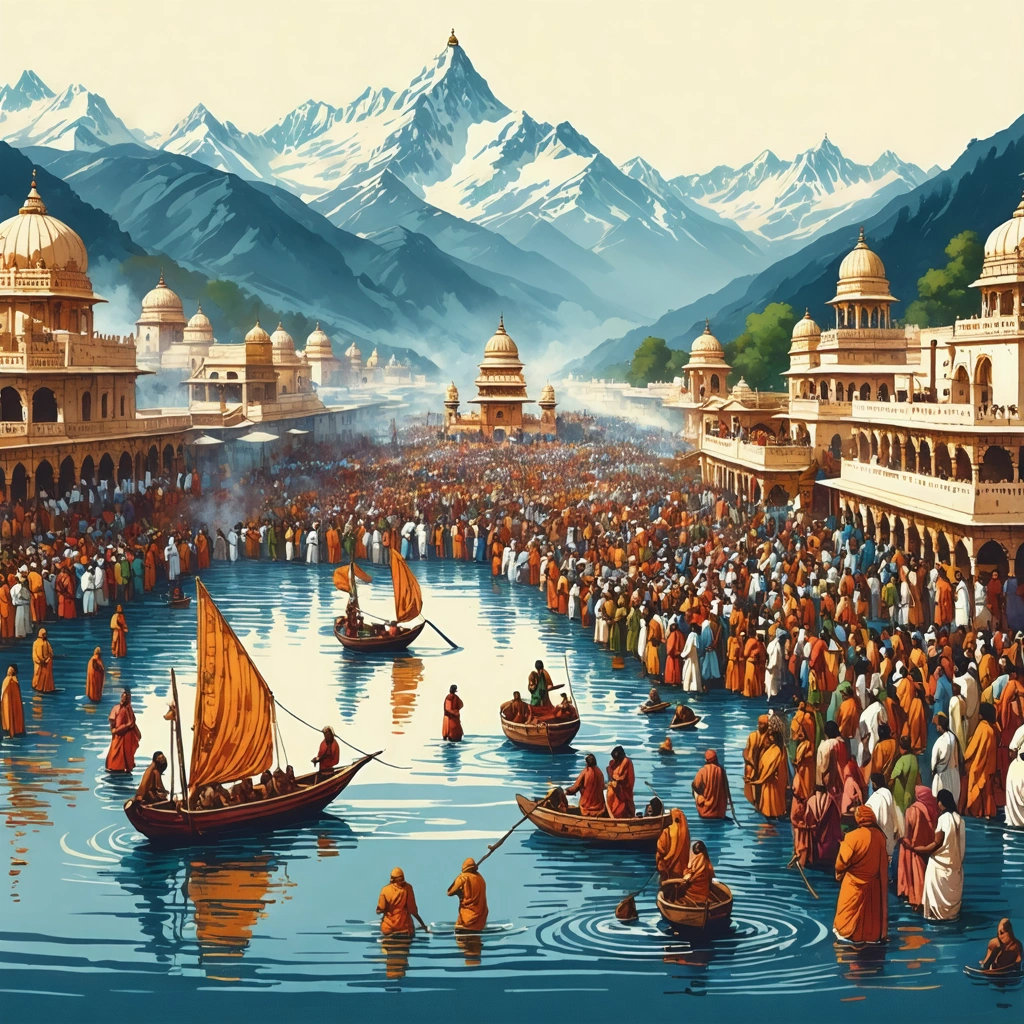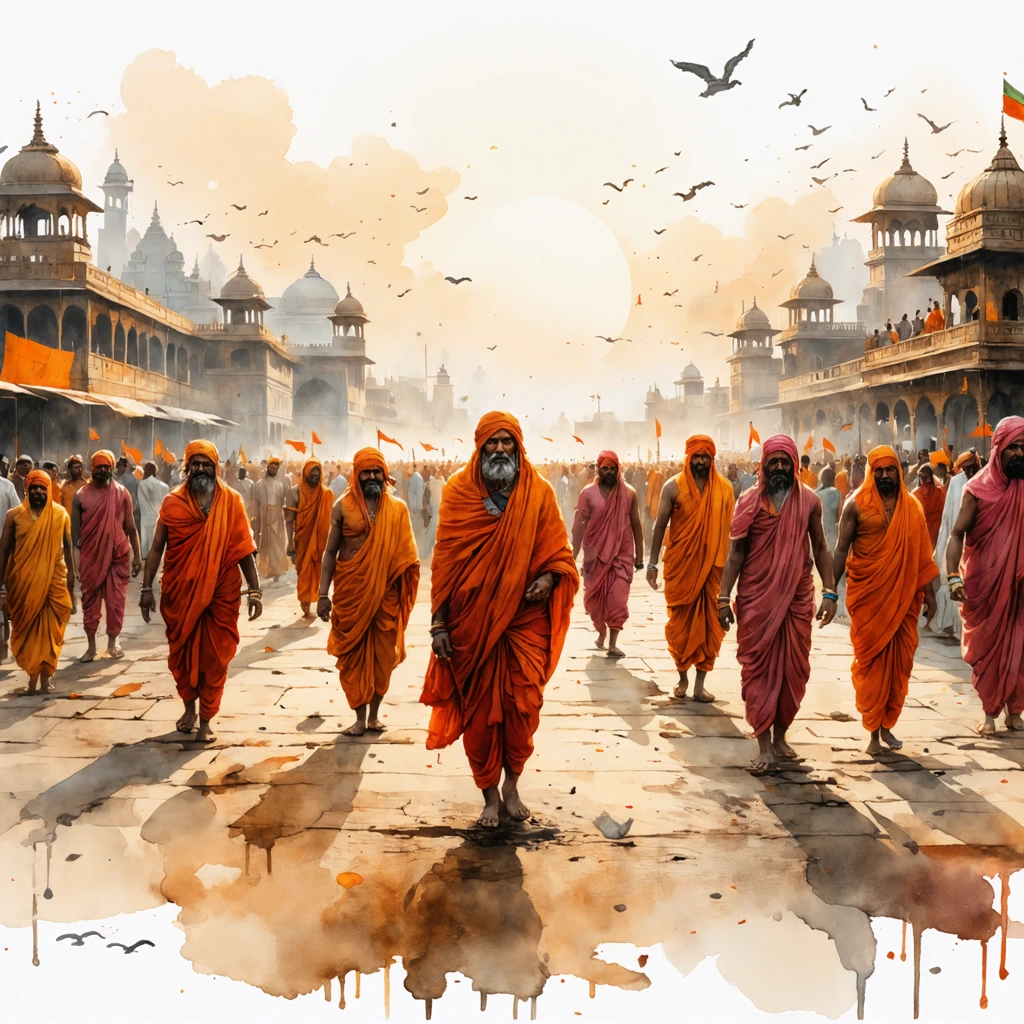Pilgrimage Sites in India: Visit India’s sacred pilgrimage sites for spiritual renewal in 2025.

Awakening the Soul: Why Seek Spiritual Renewal in India’s Pilgrimage Sites?
Have you ever felt that restless tug at your heart—a yearning for something deeper, something beyond the daily grind? In our fast-paced world, the search for inner peace and spiritual rejuvenation has never been more urgent. India, often called the land of spirituality, offers an unparalleled tapestry of sacred pilgrimage sites that have been sanctuaries for seekers and saints for centuries. But with so many destinations and traditions, where does one begin? If you’ve ever wondered “Kumbh Ka Mela Kahan Kahan Lagta Hai” or asked yourself “Kumbh Mela Kahan Lagta Hai,” you’re not alone. These questions mark the starting point for a transformative journey that millions have embarked on before you.
Spirituality in India isn’t just a concept; it’s a living, breathing experience. The sheer scale and diversity of pilgrimage sites—from the majestic ghats of Varanasi to the serene temples nestled in the Himalayas—offer so many paths to renewal that it can feel overwhelming. For the uninitiated traveler, choosing the right destination or timing the visit to coincide with auspicious events like the Kumbh Mela can make all the difference between a fleeting trip and a life-altering pilgrimage.
Unraveling the Mystery: Where Exactly Are the Kumbh Mela Places?
Ask any seasoned pilgrim or spiritual traveler about the Kumbh Mela, and you’ll hear tales of unimaginable crowds, sacred dips in holy rivers, and an atmosphere thick with devotion and hope. But what many newcomers don’t realize is that the Kumbh Mela is not a single event held in one location. In fact, the question “Kumbh Mela Kahan Lagta Hai?” opens up a fascinating exploration of four distinct places where this grand festival takes place in a rotating cycle every 12 years.
- Prayagraj (Allahabad): Confluence of the Ganges, Yamuna, and mythical Saraswati rivers, considered the most auspicious site.
- Haridwar: Gateway to the Himalayas and a city steeped in ancient Vedic traditions.
- Ujjain: Known for the Mahakaleshwar Temple, one of the twelve Jyotirlingas of Shiva.
- Nashik: Situated on the banks of the Godavari River, a tranquil yet powerful spiritual hub.
So, when you ask “Kumbh Ka Mela Kahan Kahan Lagta Hai,” you’re really looking at a sacred circuit that connects these four cities through faith, history, and celestial alignment. The Kumbh Mela is more than a festival; it’s an epic saga of devotion that gathers tens of millions of pilgrims from across the globe, each seeking a renewal of the soul through ritual bathing and spiritual communion.
Why 2025 is the Year to Embark on Your Pilgrimage
Every few years, the cosmic dance aligns perfectly to signal the arrival of the Kumbh Mela at one of its sacred sites. 2025 promises to be a remarkable year for spiritual travelers, as the festival returns with its full grandeur, offering a unique opportunity to witness and participate in one of the largest peaceful gatherings on Earth.
But beyond the Kumbh Mela, India’s spiritual landscape is dotted with countless other pilgrimage destinations that cater to different traditions, deities, and personal quests. Whether it’s the tranquil ashrams of Rishikesh, the mystical caves of Amarnath, or the vibrant temples of Tirupati, each place offers a different flavor of spiritual renewal and introspection.
In this article, we will guide you through the essential pilgrimage sites of India, highlighting the significance of each and providing practical insights to help you plan a journey that resonates with your spiritual aspirations. From understanding the timing and locations of the Kumbh Mela to exploring lesser-known sacred spots, you’ll find a roadmap to transform your 2025 pilgrimage into a deeply meaningful experience.
What’s Next in This Journey?
Prepare to dive into the heart of India’s pilgrimage culture. We’ll explore:
- The cyclical nature and locations of the Kumbh Mela, answering your burning questions like Kumbh Mela Kahan Lagta Hai and Kumbh Ka Mela Kahan Kahan Lagta Hai.
- Other iconic pilgrimage destinations that promise spiritual healing and enlightenment.
- Tips and insights on how to navigate these sacred spaces respectfully and meaningfully.
Whether you’re a seasoned pilgrim, a curious traveler, or someone yearning for a profound spiritual awakening, this guide is crafted to illuminate your path. The sacred rivers, ancient temples, and timeless rituals of India await your footsteps. In 2025, make your pilgrimage not just a journey of miles, but a voyage of the soul.

Pilgrimage Sites in India: Visit India’s Sacred Pilgrimage Sites for Spiritual Renewal in 2025
What are the most important pilgrimage sites in India to visit in 2025?
India is renowned worldwide for its diverse and deeply spiritual pilgrimage destinations. In 2025, pilgrims and spiritual seekers continue to flock to these sacred places to experience inner peace and renewal. Some of the most significant pilgrimage sites include:
- Varanasi (Kashi) – One of the oldest living cities in the world, Varanasi is sacred to Hindus, believed to be the abode of Lord Shiva. Pilgrims come to bathe in the holy Ganges River to cleanse sins and attain moksha (liberation).
- Haridwar – Another vital site on the banks of the Ganges, known for its evening Ganga Aarti and spiritual festivals.
- Tirupati – Home to the famous Venkateswara Temple, a major Vaishnavite pilgrimage destination attracting millions annually.
- Rishikesh – Known as the yoga capital of the world, this town offers spiritual retreats and meditation centers.
- Ajmer Sharif – A revered Sufi shrine dedicated to Khwaja Moinuddin Chishti, drawing diverse faith followers.
Each of these destinations offers unique spiritual experiences, whether rooted in Hinduism, Islam, or other Indian traditions. Visiting these places in 2025 promises a journey of spiritual renewal, cultural immersion, and historical exploration.
What is the significance of Kumbh Mela Places in India?
Kumbh Mela is one of the largest religious gatherings globally, held every 12 years at four rotating locations known as the Kumbh Mela Places. The festival celebrates the mythological event of the churning of the ocean and the divine nectar of immortality. It holds immense spiritual significance for millions who come to take a dip in the holy rivers to cleanse their sins and seek blessings.
The four primary Kumbh Mela Places in India are:
- Prayagraj (Allahabad) – Located at the confluence of Ganges, Yamuna, and the mythical Saraswati rivers, it is considered the most auspicious.
- Haridwar – Situated on the banks of the Ganges, it is famous for its evening aarti during the festival.
- Nashik – Held on the banks of the Godavari River, this site has deep mythological roots.
- Ujjain – Located on the banks of the Shipra River, known for its ancient temples and spiritual heritage.
The Kumbh Mela Places draw millions of devotees, saints, and sadhus, creating a vibrant atmosphere of devotion and celebration. The scale of the event often makes it a significant moment for cultural and economic activity in the region.
Kumbh Mela Kahan Lagta Hai? Where does the Kumbh Mela take place?
The question “Kumbh Mela Kahan Lagta Hai?” is commonly asked by pilgrims planning their spiritual journey. As noted, the Kumbh Mela takes place at four specific locations in India, rotating approximately every three years among them. This rotation is based on astrological calculations linked to the positions of Jupiter, the sun, and the moon.
In simple terms:
- Haridwar – When Jupiter is in Aquarius and the sun enters Aries.
- Prayagraj (Allahabad) – When Jupiter is in Taurus and the sun and moon are in Capricorn.
- Nashik – When Jupiter is in Leo and the sun enters Aries.
- Ujjain – When Jupiter is in Leo and the sun and moon are in Libra.
This astrological alignment explains the timing and place of each Kumbh Mela, making it a deeply cosmic and spiritual event.
Where exactly does Kumbh Ka Mela Kahan Kahan Lagta Hai? Detailed locations and timings
The phrase “Kumbh Ka Mela Kahan Kahan Lagta Hai?” is used to inquire about all the locations where the Kumbh Mela is held. To clarify:
- Prayagraj (Allahabad) – The Sangam area, where the three rivers meet, serves as the central venue.
- Haridwar – The Har Ki Pauri ghat is the focal point for bathing rituals.
- Nashik – The Ramkund area on the banks of the Godavari River is the main site.
- Ujjain – The Mahakaleshwar temple area near the Shipra River is central to the festivities.
The dates for Kumbh Mela vary according to the Hindu calendar and astrological positions, but the Maha Kumbh Mela, which occurs every 144 years in Prayagraj, is the most famous and grandest of all.
In 2025, the Ardh Kumbh Mela is scheduled to take place in Prayagraj, attracting millions of pilgrims for a spiritually transformative experience. Planning ahead is essential due to the massive influx of visitors.
Why should one consider visiting these pilgrimage sites and Kumbh Mela in 2025?
Visiting India’s pilgrimage sites, especially during events like Kumbh Mela, offers profound spiritual benefits:
- Spiritual Renewal: Cleansing rituals and prayers at these sacred sites are believed to purify the mind and soul.
- Cultural Immersion: Witnessing traditional ceremonies, meeting saints, and engaging with diverse communities enriches one’s understanding of Indian heritage.
- Community and Devotion: The collective energy of millions celebrating faith together creates a unique environment of unity and peace.
- Historical Significance: Many sites have been centers of spirituality for centuries, offering a glimpse into India’s religious history.
For 2025, with the Ardh Kumbh Mela at Prayagraj, it’s an unparalleled opportunity to participate in one of the largest spiritual gatherings on Earth. Proper planning, understanding the rituals, and respecting local customs will enhance the overall experience.
How to plan a pilgrimage trip to these sacred sites and Kumbh Mela Places?
Planning a pilgrimage to India’s sacred sites and Kumbh Mela Places requires careful preparation:
- Research Dates: Check the exact dates of festivals and bathing days, especially for Kumbh Mela, to align your visit accordingly.
- Accommodation: Book accommodations well in advance, as these places attract huge crowds during festivals.
- Health & Safety: Stay hydrated, follow hygienic practices, and be prepared for large crowds.
- Local Guides: Hiring knowledgeable guides can provide deeper insights into rituals and local culture.
- Transportation: Use reliable transport options; many pilgrimage towns have special arrangements during festivals.
By following these steps, pilgrims can ensure a spiritually fulfilling and comfortable journey.



